Key takeaways:
- Artistic influences shape an artist’s creative voice and evolve with personal experiences, highlighting the dynamic nature of creativity.
- Engaging with various art forms and artists can expand creative horizons, fostering innovation and deeper emotional connections to art.
- Curatorial choices are guided by both intuition and deeper emotional significance, revealing the personal narratives that resonate with audiences.
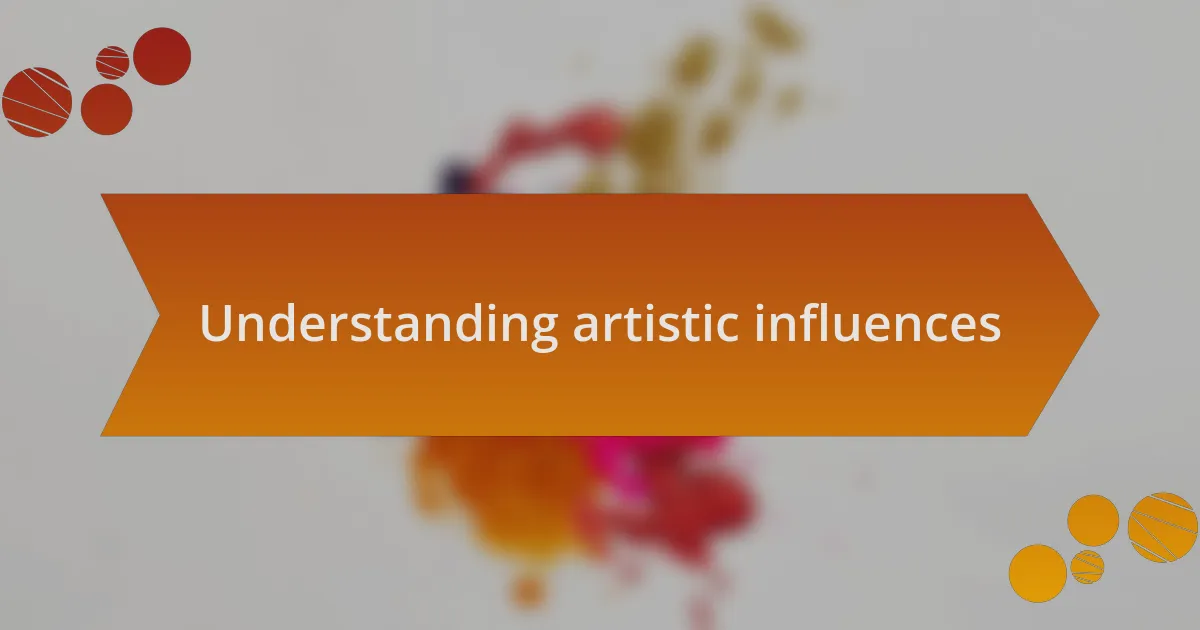
Understanding artistic influences
Understanding artistic influences is essential to developing a unique voice in your art. I recall the moment I stumbled upon a forgotten sketchbook from my college years, filled with doodles inspired by my favorite artists. It reminded me how crucial it is to reflect on those influences, as they shape not just our artwork but our very perception of creativity.
When I look at a piece of art, I often ask myself, “What led the artist to this point?” This curiosity pushes me to explore various movements, cultures, and personal stories behind the work. It’s a journey that transcends mere aesthetics; it’s about understanding the emotional landscapes that fuel artistic expression. Each discovery becomes a thread that weaves into my own creative tapestry.
Moreover, I’ve noticed that my influences can shift dramatically in response to my life experiences. A challenging phase in my life might draw me toward the raw emotionality of expressionism, while moments of joy could inspire a more vibrant, carefree approach. This fluidity in influences reminds me that art is not just about learning from others—it’s about allowing those influences to grow and evolve as we do.
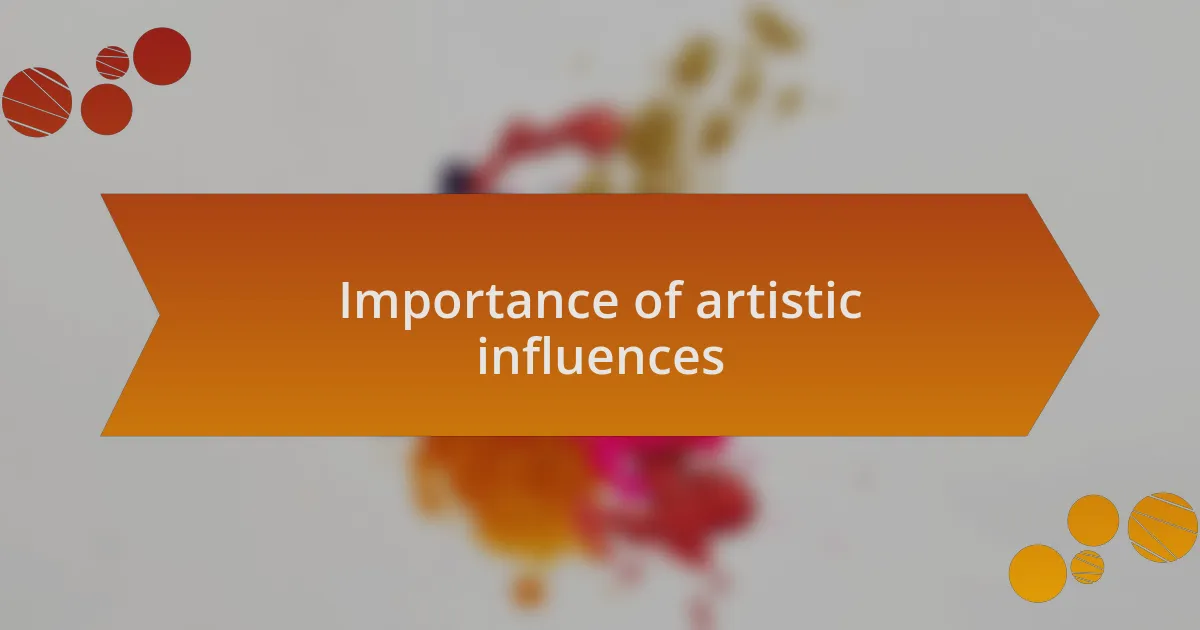
Importance of artistic influences
Artistic influences are essential because they provide a foundation for understanding and experimenting with our creative expressions. I often find myself captivated by the stories behind famous pieces, which sparks inspiration and prompts me to reflect on my own artistic journey. Have you ever wondered how a painter’s background shapes their work? I believe that exploring an artist’s influences can lead to a more profound appreciation of art itself.
There’s a certain power in recognizing how these influences inform our choices. When I revisited the works of artists like Frida Kahlo and Vincent van Gogh, I realized how their struggles were translated into vibrant visuals. This connection between personal experience and artistic output resonates profoundly within me, inspiring me to channel my emotions into my work. It’s a reminder that we are not alone in our creative battles; rather, we are part of a larger narrative.
Furthermore, understanding artistic influences helps me break down barriers in my creativity. I distinctly remember experimenting with a style inspired by Japanese woodblock prints, which was a departure from my usual methods. That experimentation opened doors to new techniques and perspectives, reminding me that influences are not just historical reference points but dynamic sources of innovation. Have you embraced your influences in similar ways? Exploring their importance can truly transform how we approach our own artistry.
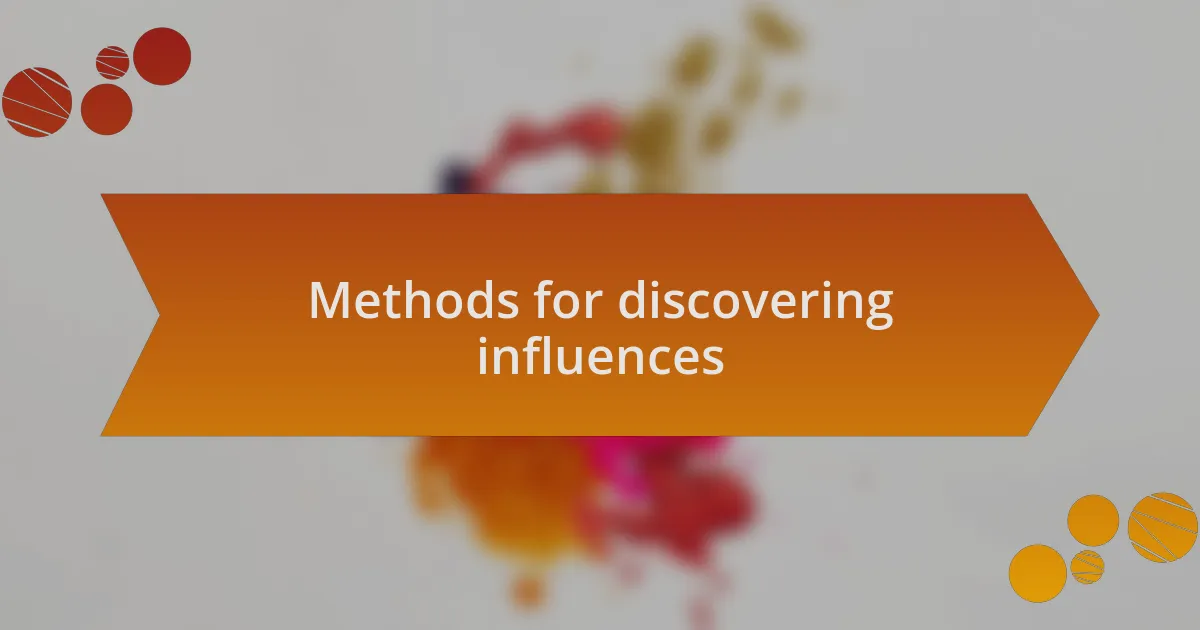
Methods for discovering influences
When it comes to discovering artistic influences, I often turn to a mix of traditional and digital resources. Visiting art galleries and exhibitions allows me to experience art firsthand, creating emotional connections that books or online images can’t replicate. Have you ever felt that jolt of inspiration when standing before a masterpiece? That immediate reaction can often guide my artistic direction more than any textbook ever could.
In addition to physical spaces, I find that social media platforms like Instagram and Pinterest are treasure troves for discovering new artists and styles. The algorithm tends to feed me a wide array of art forms that I wouldn’t typically encounter, and it’s exciting to see how these diverse influences can reshape my creative vision. I remember stumbling upon a digital artist whose vibrant color palette reignited my interest in abstraction—what a rush that was!
Finally, I make a point to engage with fellow artists for direct inspiration. Conversations about our artistic journeys can illuminate paths I hadn’t considered before. I recall a candid discussion with a friend that led me to explore surrealism, something I had dismissed in the past. Isn’t it fascinating how a single conversation can change your perspective on an entire genre? Each method of discovering influences enriches my art and expands my creative horizons.

Analyzing different art forms
Analyzing art forms is a deeply personal endeavor. For instance, when I immerse myself in contemporary sculptures, I often find myself questioning the relationship between space and the viewer. Have you noticed how certain installations can evoke feelings of confinement or freedom? It’s incredible how the manipulation of materials, like wood or metal, can convey such profound emotional undertones.
On another note, exploring traditional painting techniques has been a transformative experience for me. I vividly recall the first time I tried my hand at oil painting; the way the colors blended on the canvas felt almost primal. What struck me was not just the beauty of the artwork but the historical techniques behind it. Those layers of varnish and glazes don’t just create depth; they tell a story spanning centuries, one that I now aspire to contribute to.
As I delve into printmaking, the process becomes part of the artwork itself, revealing the unique textures of the medium. I sometimes sit in the printshop, mesmerized by the sound of the press rolling and the scent of the ink. Each print holds a specific narrative, reflecting my experimentation and growth. How does a simple technique like etching change your perception of art? For me, it turns the act of creation into a dialogue between the artist and the material, challenging me to think beyond the canvas.
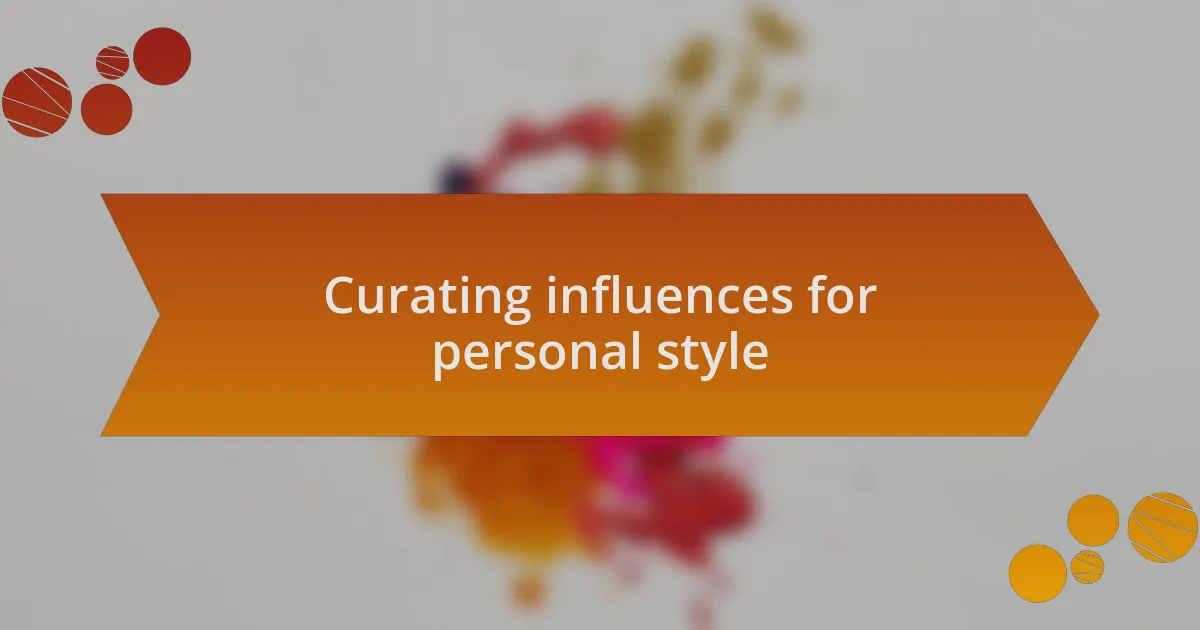
Curating influences for personal style
Curating influences is a dynamic process that demands intention and reflection. I remember when I stumbled upon a collection of street art while wandering through an urban neighborhood. Each piece vibrantly told a story of resilience and community, and that experience deeply inspired me. It made me realize how much I could draw from everyday environments, reminding me that art doesn’t only exist in galleries—it thrives in the world around us. What about you? Have you felt that spark when encountering art in unexpected places?
As I refine my personal style, I often look to artists who challenge traditional boundaries. For instance, the bold experiments of abstract expressionists offer me an invaluable lesson in emotional honesty. One evening, while practicing my own abstract painting, I felt liberated when I let go of perfection and embraced spontaneity. Isn’t it fascinating how a shift in mindset can completely transform your creative process? This exploration reinforces my belief that the influences I choose shape not just my art, but also my artistic identity.
I continually seek to balance diverse influences while nurturing my core aesthetic. Discovering lesser-known artists has often led me down fascinating paths. I remember coming across an obscure artist whose playful use of color resonated with my own work, igniting conversations within my art community. How can these encounters redefine my approach? The answer lies in the depth of inspiration that flows from connecting with others, each discovery enriching my personal journey in artistry.
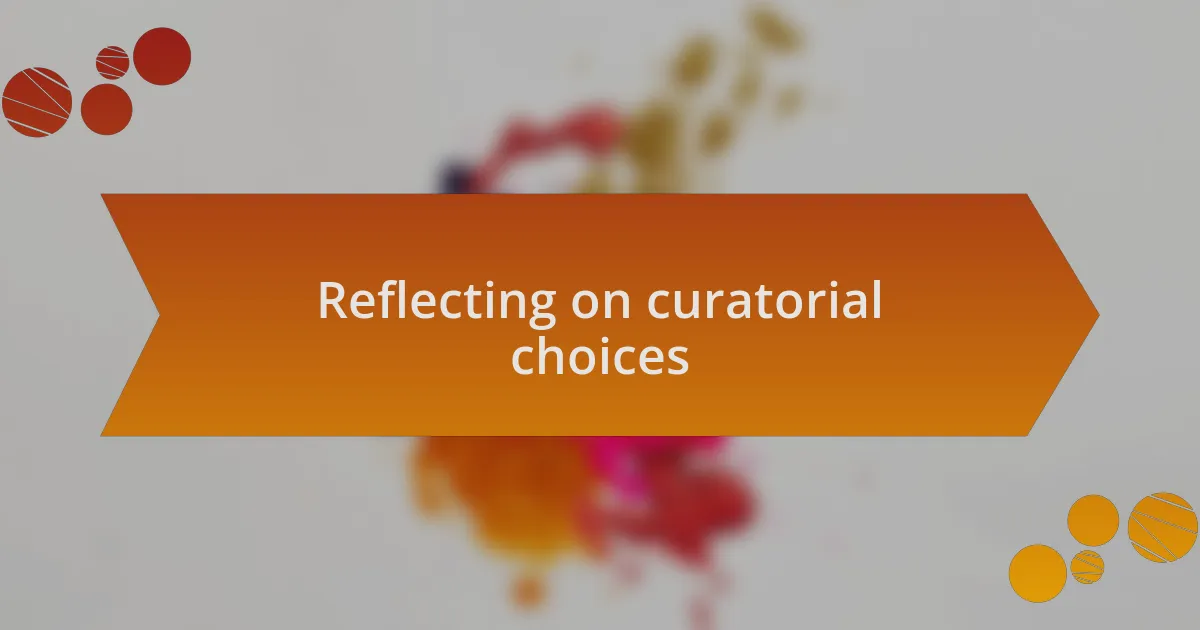
Reflecting on curatorial choices
Reflecting on curatorial choices requires me to dig deeper into the emotional significance behind every piece I select. I recall a moment when I curated a mini-exhibition about displacement and belonging. Each artwork spoke to the viewer in profound ways, evoking powerful memories and feelings. It was in that moment I realized how curatorial choices can elevate art beyond mere aesthetics; they can resonate with personal experiences and shared histories.
In reviewing my curatorial past, I’ve noticed how some choices were more intuitive than others. For example, there was a time I included works that seemed unconventional at first glance. Initially, I hesitated, fearing they might not fit within the expected narrative. However, upon stepping back, I discovered that their unconventionality created a dialogue with the more traditional pieces, enriching the overall experience for the audience. Isn’t it incredible how a single art piece can ignite unexpected conversations?
As I reflect on these curatorial choices, I often find myself questioning the motivations behind my selections. Was I drawn to the artwork for its technical skill, or was there something deeper at play? I remember an instance where I included a hauntingly beautiful sculpture that conveyed vulnerability. This choice came from my own struggles, and seeing the audience connect with it confirmed the value of authenticity in curating. Engaging with these questions not only helps me grow as a curator, but it also deepens my connection with the art and its impact on viewers.